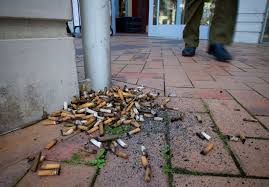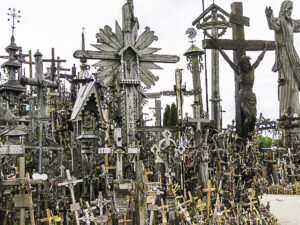In the Weekend NYT, there was a thought-provoking article saying we now have a great way in Instagram of recording aphorisms – the one-liners, deep philosophical verbal gestures. Jean Crispin writes:
“This should be the golden age of the aphorism. Constrained as we all are by time, attention and social media platform character limits, when we pull out our smartphones and stare into their illuminated fields, we can take in only so much. Shouldn’t those words be perfectly chosen to vibrate with hidden meanings?”
An aphorism has a way of bending you to its hidden truth, changing your way of thinking not with a 20-page document of well-reasoned arguments, but with just a sentence or two.”
I have two responses – one is that an Instagram is a vehicle for one line vanity press – “Look at me, aren’t I clever?” Mostly, the answer is no! In fact, given the weight of encouragement her opinion may give, I would introduce a Crispin Licence to Practise in her golden age.
The other is a question: “Have you ever read an anthology of aphorisms.” It is eye-glazingly boring unless you want to filch one and then pass it off as your own cleverness.
However Chris Brook, later in this blog, makes a very valid point, if obliquely. The name “blog” implies stodge as if we are working our way up a muddy hill. However, as Brook points out, the blog is a very good place to set up a conversation as long it remains coherent.

A blog is a modern cartouche. Not only does it name the author who is trying to explicate an eternal truth but also in itself it is self-contained. As I am writing, I glance up and see the front wall of our house; it is a variegated set of bricks that have been put together to cohere. Not exactly the wall of a Pharoah’s tomb, but the wall of brick cartouches is a sufficient metaphor for policy by cartouche aka blog. Thus, the blog can be used to build a policy wall, which Chris Brook is doing incrementally with his health policy contributions.
Napoleon Bonaparte, when he saw the ancient Egyptian way of hieroglyphic messaging, thought it looked like a gun cartridge, hence the name “cartouche”. I am sure he would have had a less viscous name for “blog”, perhaps “L’araignée boisée” abbreviated to “abois”.
A Memo to Me Mate the Minister for Minerals
Change is something that can take a long time. Therefore it is useful to live long enough to see change happen and then see the society change, especially when you yourself started on the wrong side of history.
By this I mean I started smoking when I found a half empty packet of brown Capstan in the train on the way home one night when I was 17 years old and from then on I smoked until I was 40, when I gave up. I have never had a cigarette since. But back then tobacco usage was pervasive. I owned several pipes so that tobacco could give me gravitas. They didn’t.
One of my memories is being in the emergency department during my internship. We used to light one cigarette from the butt of the last one. Many of the senior doctors smoked and we were corralled into the room at the end of the ward so that he, the senior doctor, could have a smoke (never “she” then) while he taught. The Medical Journal of Australia had until recently then been accepting advertisements from cigarette companies. My father, who was a doctor smoked cigarettes and more often Cuban cigars. He died in 1970 – he had a heart attack. It was Tobacco that helped get him.
It was Richard Doll who, with his colleagues in Oxford, identified the link between lung cancer and cigarettes from the late 1940s. He authored an article on doctors’ smoking habits in 1954. This whole public health investigation was not on the political radar, and even when it was there was a reluctance to interfere given how much cigarette money was sponsoring so many activities, including political parties.
Like many of my contemporaries in the health industry, I had one particularly uncomfortable moment on the way to weaning myself from cigarettes. I happened to be in the office of one of Jimmy Carter’s advisers. I asked whether he would mind me smoking, pulling out a packet of Gaulois. He looked at the packet and suggested that they were worst cigarette to smoke from a lung cancer point of view. Needless to say the rest of the conversation could have been better.
However, it was three years before I abruptly stopped. By that time I was working for the AMA, but there was no overt pressure for me to stop. I just decided one day it was a dirty habit. I just smelt. Cigarette ash like coal dust was a pollutant. So I went cold turkey. I surprised myself and never smoked again. And one of these days, we as nation will have to go cold turkey on coal, before it is too late.
The only contribution I have made to policy in this area of tobacco happened one day in the early 1980s during my time at the AMA. I was rung up by a friend who was then on his way up the bureaucratic ladder, who asked what I thought about indexing the excise on tobacco products. I said great idea – and QED, it came to pass.

However, far more importantly, community behaviour has changed in Australia. The smoker is very much a pariah in public places – the array of butts on the windy corners of the city reinforce the image of the uncaring polluter.
One wonders how long it will be for those who hold up a lump of coal in Parliament proudly, to be like the young doctor in the emergency department lighting a cigarette amid an atmosphere of tobacco smoke, and change. Hopefully it will not take 17 years.
One cigarette executive once said of me that I was a hypocrite in my attitude to smoking. No, I said, as our coal-fired politicians and their minions hopefully may eventually recognise, they will eventually become as I did over the matter of cigarettes – a penitent.
Not to everyone’s Taste
When I went to the Baltic States a little time ago I visited many churches. I climbed the Hill of Crosses in Northern Lithuania. My visual cortex is an attic stacked with images of Christ the Child and Christ the Man. These are not my image of Christ nor indeed of my God the Father who dominates those below as if some Jovian presence as though Heaven is at the top of a religious escalator. As for the Holy Spirit as some wraith dodging in and out of my cerebral inglenooks … really?

I therefore cannot conjure a visual image of the Trinity. I do not have the capacity to do so. They are not Three clustered on a Throne. I am thus left with my other known senses to provide me with some reference point by which I can relate to the Trinity.
I cannot touch Them, although in some worlds people seem to believe in the supernatural. Whether that is some kinaesthetic experience where God in various forms intrudes is again beyond my ability to fathom.
I cannot hear God. It is not that I am deaf, but I have not had the experience of having auditory communication, although I may have missed it – by not having paid enough attention, not being able to break the code or simply not knowing the language.
I thought that since frankincense and myrrh were so important in the Nativity that perhaps there would be a particular fragrance where I may be able to smell God. To me substances that emit a smell are important to my being. In particular I love herbs in all their differentiation. The Bible is full of references to herbs, and for a moment I toyed with the ability to distil these olfactory sensations as a means of conceiving God. But then the idea was too difficult and my brain inadequate to process – at least at this point in time.
Then there is taste, and in the early hours of one Thursday morning, I realised that when I have taken the Bread and the Wine at Communion it is somehow different. I cannot express that thought any further, but taste is a very complex physiological phenomenon. Taste is itself a trinity of cranial nerves – the facial, the glossopharyngeal and the vagus. Surely that is a coincidence!
Perhaps, just maybe, that is how God is in my head. But I am still uneasy and unsure to presume even that. But it is the only way I can sense my God.
Chris Brook on Health
Whenever the future of the Australian health system in Australia is discussed, the discussants tend to focus on their own area of special interest and to adopt the “gap filler” approach. It is the basis of incrementalism.
It seems pragmatic and sensible to target perceived areas of deficiency. Examples of this currently are:
- universal dental care (a costly initiative if ever adopted)
- mental health care including youth suicide ( very deserving of consideration)
- better public information to facilitate informed decision making
- integrated care initiatives.
- In fact the list is endless. It is a question of priority.
Filling gaps seems to assume that all is otherwise rosy in the health care system, when of course it is not. I listed above some of the schemes. Underlying the edifices we wish to build are the fault lines.
- Think how far dental health schemes are from universality
- Think lack of coordination between GP type primary care and specialists
- Think of the gulf between hospital care and any form of community based care whether specialist, general practitioner or other
- Think cost shifting between levels of government between care settings and funders including private insurance funds, a set of pernicious behaviours raised to an art form in some jurisdictions
- Think out of pocket costs and deliberate privatisation of services
- Think of the difficulty for the increasing number of people with chronic and often multiple morbidities in navigating the fragmented health system.
Above all, think “systems”! Then ask why don’t we actually have one! For historic reasons we have a set of arrangements based largely on fee for service, whether Medicare, Hospital casemix funding, or Pharmaceutical Benefits scheme.
Multiple costly government attempts to engage general practitioners, with the latest being primary health care networks (PCHN), but also with practice incentives, IT incentives and without anything similar for specialists. They just have not been sensibly considered.
There are many questions about the Australian health system. For example, why is Australia’s rate of hospital admissions some two and a half times greater than virtually all other OECD countries? The answer lies solely in what Australia counts as an admission where it includes day treatments and day procedures as admissions when no actual overnight stay is involved. Once this is taken into account the Australian apparent admission rate plummets to the normal international level. Australia does this for accounting and payment purposes and it may be said that it works reasonably; but could it be better if done differently?
Many countries are far more advanced in consideration and implementation of capitation-based funding for large parts of health care, adjusted for risk using some really very good predictive tools, such as DxCG predictive for risk.
The appeal of capitation since the 1930s has grown with the birth of Health Maintenance Organisations like Kaiser Permanente. Offering an annual payment for all care should allow flexibility in the “what and where” of care including, most importantly, preventive services. It should allow tailored care for individuals and greatly facilitate navigation.
The theory may not always translate because the bogey of managed care is that it is rationing in disguise – and rationing has caused many problems notably in the USA, in particular knowing where to draw the line.
Nevertheless, capitation has its advantages, especially for the funder.
Fee for service at the extreme is a free-for-all encouraging providers to offer as many services as possible to as many people as possible, whereas capitation encourages providers to offer as few services as possible to the least number of people.
So measurement of adequacy of patient benefit must be part of any approach, being preferably outcome based, incorporating the triad of: clinical assessment, whether periodic or after a specific care; patient reported health outcome measurement, including some measure of satisfaction; and periodic functional assessment. Here elective surgery is the easiest one to reference – post-joint surgery or post spinal surgery; one functionality, the other more relief of pain.
Barriers are pervasive. The structure of the Australian Constitution originally only accorded one Federal health power – that of quarantine – and has made the Australian health system a patchwork, which is increasingly fraying around the stitches.
One blog is too short a space to go much further, so take this as just a start. Serious policy is always work-in-progress. However serial blogging over time will help, as now is a very appropriate time to take this whole policy area much further.
The rise of the zinger
I remember when the late Senator John Button, in a mischievous moment in the Senate, once asked the Minister of Science a question without notice: how many centimetres there was in an inch? The Minister did not know. Button achieved his point; he made the Minister look like an idiot. Although amusing at the time, it has not improved the quality of the politicians who have been given the science portfolio – that is when the portfolio hasn’t been abolished.
Alan Jones uses the same ploy but slightly differently. Ask a relevant question when confronting someone ideologically at odds, but unlike Jones who does his homework, the other person has not done so.
So when Jones asks one of these adversaries what is the current level of CO2 in the atmosphere, and that person doesn’t know, Jones goes on his victory tirade. It doesn’t matter if that person knows the answer, reality is not based on some human dot not knowing the answer.
Oh please … the zinger. Smart, but it doesn’t help when we are seriously discussing the future of Planet Earth.
The reality is that the level of CO2 in the atmosphere is straight lining upwards like the trajectory of a bullet into the sky. We have passed the 400 ppm mark.
If fossil-fuel burning continues at a business-as-usual rate, such that humanity exhausts the reserves over the next few centuries, CO2 will continue to rise to levels of order of 1500 ppm. Then forget about the human race. Think Venus with billowing clouds of CO2 disguising the uninhabitable planet surface below.
But Alan, you will not be around, nor shall I – but unlike you, I have descendants for whom I feel responsible.
Mouse Whisper
Three years too soon? Or don’t talk about the Polls? It was not only Newspoll. Some weeks before the election …
“Labor is comfortably ahead of the Coalition in the latest Guardian Essential Poll, and just over half of the voters in this fortnight’s sample, particularly voters under 34, worry Australia is not doing enough to address climate change.”
